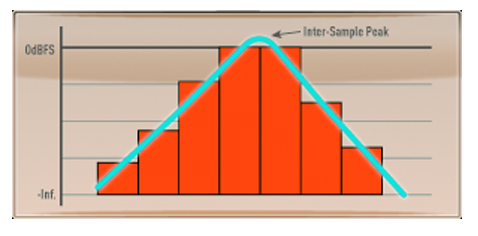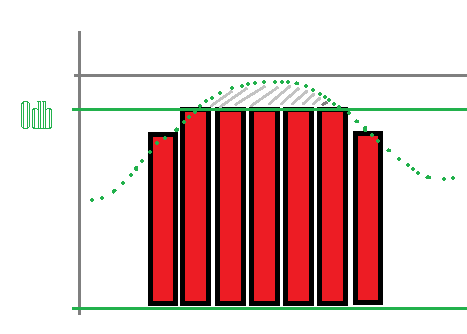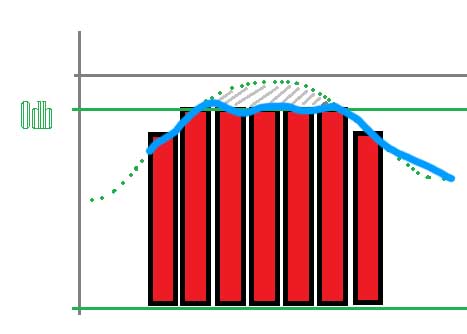Ok. I see. You made it sound like you believed Waves was taking their cues specifically and exclusively from GS (unless you actually WERE saying that) lol…of all places. I would have thought that if GS was the only place Waves was going for its customer input, their plugins would be trollcomp, trollverb, nonsenseEQ, sonicExagerator, and analogWarmer.
Haaaaa! They added to the bundles today. Kinda thought they would.
I was surprised it wasn’t already included in the Mercury package.
A bunch of their plugins already have a VU meter. I wonder if that was the exact same thing.
While using a VU meter is not necessary for a clear mix. Giving a proper headroom is still relevant today.
The VU meter is modeled on the old VU meters where the copper needle was purposely made ‘weighted and calibrated’ to create a “rise time” of around 300ms.
This may be better understood with a little bit of biology.
The way I understand the anatomy of the ear . The earbones need between 66 to100 miliseconds to perceive a sound. In some elder folks that number rises to around 300 ms. Which means ears react differently with age. Which is why the older VU meters were calibrated that way. It is true that human ear needs a bit of “reaction time” to understand what is going on.
VU meter plug is just emulating that to make sure that your clipping levels stay within ‘audible human reflex’ times. Real vs Perceived loudness has to do with biology. Which is why we say trust the ears.
anyway… for digital headroom why I still leave headroom is to avoid inter sample clipping along the road.
If I am recording 24 bit 96khz, I tend to leave 2db headroom so in case my mastering engineer uses analog converters, chance of intersample clipping is less. If I am recording 16 bit 44.1 I tend to leave more like 5 db, this really depends on your sample rate. The faster your sample rate, the less headroom you need. This image will explain a bit. The bars in red are digital samples, and if you throw it in an analog converter, the converter will perceive a higher peak than your digital peak.

In short, leaving headroom is sort of “backwards compatibility” and “scalability” in software terms. Its not for you, its for what your sound will undergo in the future. Like ending up in some funky remix…
I don’t want to start a big old debate on this, but I do want to clarify a couple things about intersample clipping. By definition, intersample clipping only creates harmonics outside the audible band. It’s also the kind of thing that any modern D/A should be able to handle without any issues at all.
Also, if the whole 66-100ms thing is true, intersample clipping can only take place for a maximum of 22 microseconds, which is the time between samples at 44.1 kHz. So even if the distortion caused by intersample clipping did take place in the audible spectrum, it would be so short we couldn’t hear it anyway.
Not that it really matters one way or the other. It doesn’t hurt to turn your mixes down to a point where it’s peaking at -6 or -12 or -18dB. It’s just that there’s no real technical reason to do so. It’s more because mastering engineers have a workflow they like, and giving them a sane level takes an extra step out of their process.
66ms thing is true yes, can also be confirmed by certain ear specialists. But the way I see it, if you invert it you get 1/0.066 = 15 hz which is the lowest frequency heard by humans. It sets the baseline for the hearing reflex for humans for their hearing band.
yep its been debated that way, some say they cant hear it, some say if there are too many intersample peaks it sounds like clicks at the high end glued together like a faint static. It happens in modern day DA converters as well.
mathematically even in a recursive spline DA converter, if there are too many digital peaks, the intersample peaks could get larger and larger giving some credibility to the fact that there is a possibility of it being heard.

Some say it gets amplified by certain audio systems … /shrugs I just dont like my sounds tainted.
Leave headroom, there is no harm in it. If it helps an ME save some time, even better.
Yeah, people say a lot of things. Which is fine I guess. I wouldn’t let it be something that affects the way I work unless someone shows an actual reason for it. So far, I haven’t seen one for intersample clipping.
This is by far the most compelling argument.
But the interpolation of that signal would not look like the green line. It would look more like this blue line. And even if that blue line was clipped, it could be reconstructed with a simple low pass filter. That image is not showing intersample clipping, it’s just showing straight up clipping.

theoretically it could be dampened by post processing.
To a human ear, the blue wave would coagulate if it keeps on happening pass the hearing threshold and overall resulting amplitude would feel closer to the green line. As a human hearing curve translates frequencies closer to a pure sine curve. Too many loud sounds closer together sound even louder that what it should mathematically.
This response changes per person. There are some really sensitive ears out there.
agreed, this debate could go on forever, but my intuition says to leave headroom and a womans intuition is the best thing 
but again, that image isn’t showing intersample clipping. It’s just showing clipping. They aren’t the same thing. It’s very true that you can hear clipping. I don’t think anyone would debate that.
But intersample clipping is, by definition, clipping that happens in between samples. Any distortion happening between samples is, by definition, beyond they nyquist frequency. That’s why it can only happen when you upsample and interpolate. But again, any modern D/A can easily account for this. Especially mastering grade DACs.
check mate.
yes I did an exaggerated example of a soft clip . If you are really interested in all the details, I can try to find a detailed samples that fit the scenario of a fast tempo song with too many intersample clicks. I still have a couple of friends who are working on simulating this. The real question is can we hear intersample clicks or not, if not are there any cases where it can be heard by humans… or maybe dogs!! Dont want dogs running wild either 
I would love to hear an example of any signal, musical or otherwise, where intersample clipping is audible. Of course, that will be DAC dependent, so it would have to be an example of a song that was sent out of a DAC and recaptured at a lower level, and compared to the same song that was sent out the same DAC at a lower level and recaptured in the same way.
great discussion guys!
Boz is correct here FC, a high headroom DAC will account for this, this is an example.
older DACs (most D/A converters) an intersample over will produce a burst of high frequency (so as a scalability standpoint, still a good idea to leave headroom)
??? So is there some kind of official list as to which DAC’s are ‘high headroom’ and which ones aren’t?
It’s been really interesting to reading what you two are saying here.
Is that even true though? I actually don’t have any test data, nor have I seen it, but I would be surprised if there exists any DACs made after 1995 that still can’t handle intersample peaks over 0dB. But again, I have no evidence to back this up. I’d love to see evidence one way or the other.
its really hard to get any kind of data on it, requires quite a bit of effort. You need the right samples, a few DACs older and newer and someone who truly cares…
no idea but as boz mentioned, anything newer should be able to handle em. They have been a non issue since a few years I think
 I say a hermaphrodite’s intuition is the best thing. Since they have the intuition of both genders.
I say a hermaphrodite’s intuition is the best thing. Since they have the intuition of both genders.
Exactly. There are people that think CD’s from Japan that have identical mastering to domestic CD’s sound better simply because they were created in Japan. DAC’s are more than capable of handling intersample clipping.
oh, that…
I care. Just not enough to go through the effort to find out how much of an issue it is. Like @FluteCafe said, “Leave headroom, there is no harm in it.” Anything beyond that is purely for the sake of curiosity.